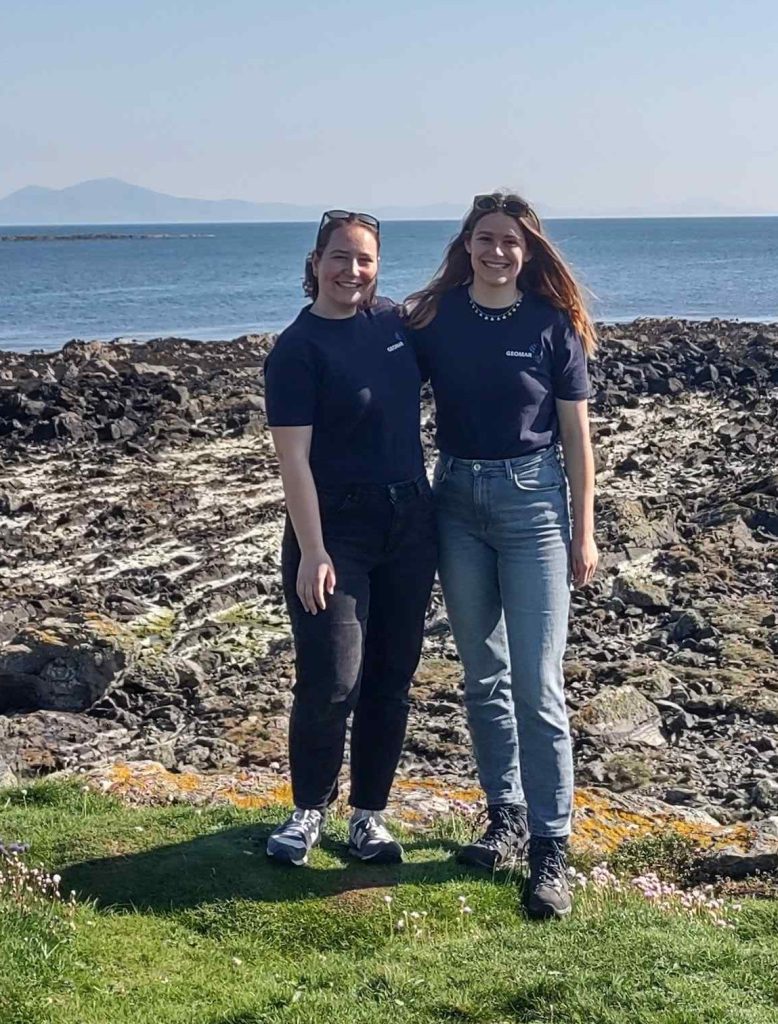
Croeso i Gymru! Welcome to Wales!
Among Japan, the Philippines, Malaysia, Cape Verde, Chile, Finland and Spain, Wales is back as a location for this year’s GAME project! We are Stefanie and Clara and will be conducting our experiments over the summer here at the beautiful northwest coast of Wales. Stefanie is studying biology at Mainz University and has been fascinated by marine life for a long time, so she is quite excited to finally leave terrestrial biology behind and dive into the wonders of the oceans. Clara has been dreaming about becoming a marine biologist ever since she started her Bachelor’s and is now a student in the Biological Oceanography program at GEOMAR in Kiel.
Similar to the GAME projects of the last years, our aim is to study how artificial light at night (ALAN) impacts marine life in coastal systems. More specifically, we will be running a field experiment to investigate how ALAN affects the growth of marine epiphytes on macroalgae. Epiphytes are plants that grow on other plants, and in marine systems benthic microalgae and small, filamentous macroalgae grow on large underwater vegetation such as macroalgae or seagrasses.
Coastal areas are particularly exposed to artificial light due to the illumination of harbours, settlements and ships at night. It has been estimated that around 22% of coastal regions worldwide are already exposed to ALAN. This may have severe consequences for the organisms living in these habitats, as night-time lighting can interfere with navigation, change the timing of spawning events or disrupt internal clocks. Thus, these disruptions might even lead to pronounced changes in ecological communities and they might not be restricted to animals alone. However, there is still a big knowledge gap in our understanding of the potential effects of ALAN on seaweeds as this topic has only very recently become a subject of research.
In contrast to last year’s project in Wales, our daily work takes place at the School of Ocean Sciences (SOS), which is located on the shores of the Menai Strait in the tiny town of Menai Bridge. It is just a fifteen-minute bike ride (at least when you cycle down the hill, the way back is a different story) from Bangor, where the main university buildings are located, and which has been our home for two months now. The small town of Bangor is best known for its buzzing student life, but can get pretty quiet over the summer as the spring semester in Wales ends at the end of May and most students go home until lectures start again in late September.
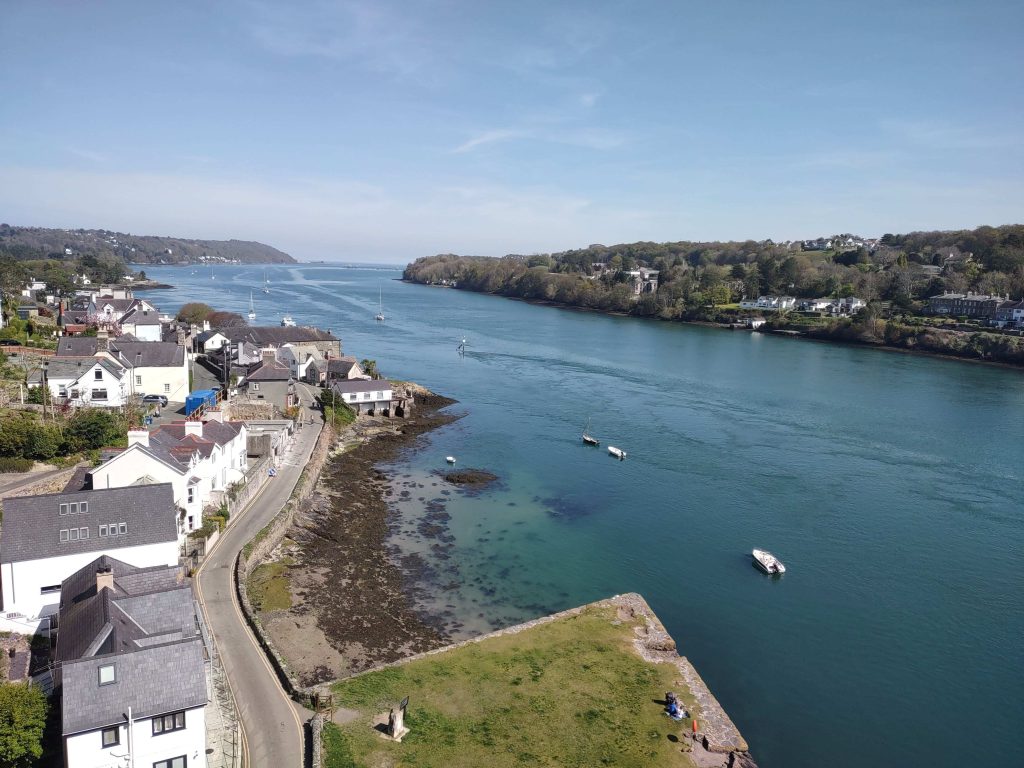
We really like the working atmosphere here at SOS. Everyone is very helpful and willing to share his/her experiences from own research work during lunch or coffee break. Clara is particularly happy with the concept of the coffee club at SOS, for just 2£ a week you can get as much coffee (or tea) as you like! One of the best parts is that most people who work here gather around 11 a.m. for a coffee break in the kitchen or on the roof terrace. It’s always a great opportunity for a friendly chat with some PhD students, some spontaneous brainstorming with our supervisors, or just listening to someone venting about an R code that is not working.
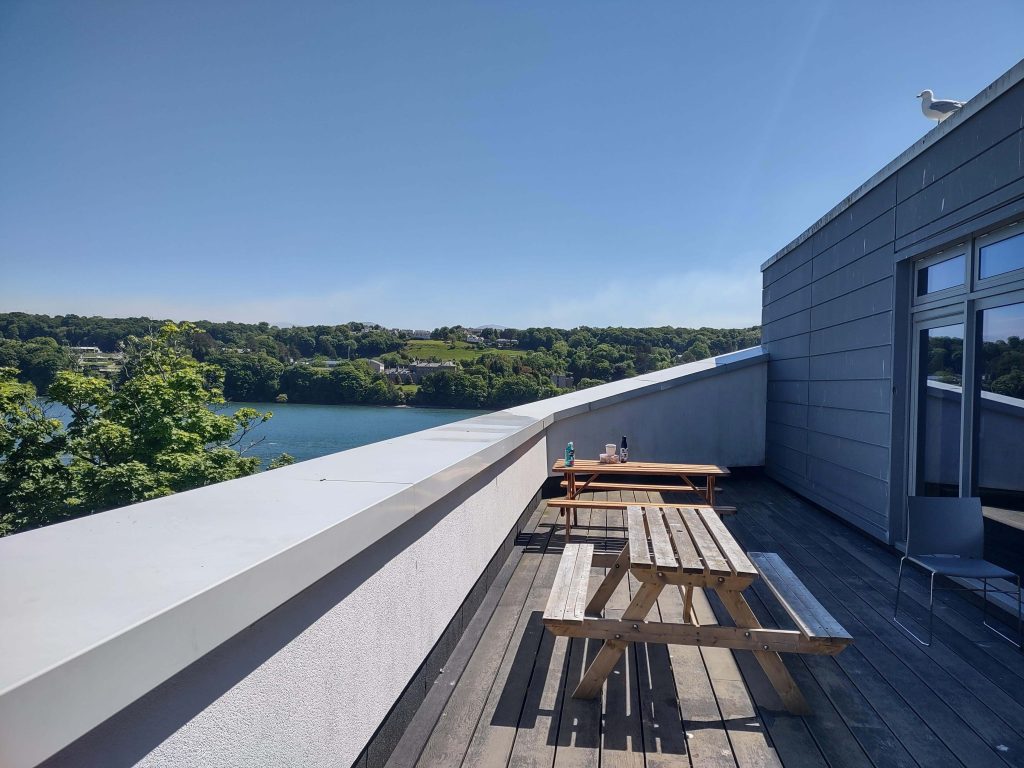
When we first arrived here, we quickly realised that we would be confronted with a lot of Welsh words – everything is displayed both in English and Welsh, such as street signs but also all the university emails. We already came across a lot of funny Welsh names, like Llanfairpwllgwyngyllgogerychwyrndrobwllllantysiliogogogoch (don’t even try to pronounce it), a town located close to Bangor on the Isle of Anglesey. Another thing we noticed is that there are really a loooot of sheep here – did you know that Wales is home to more sheep than people? There are, on average, three sheep per person here.
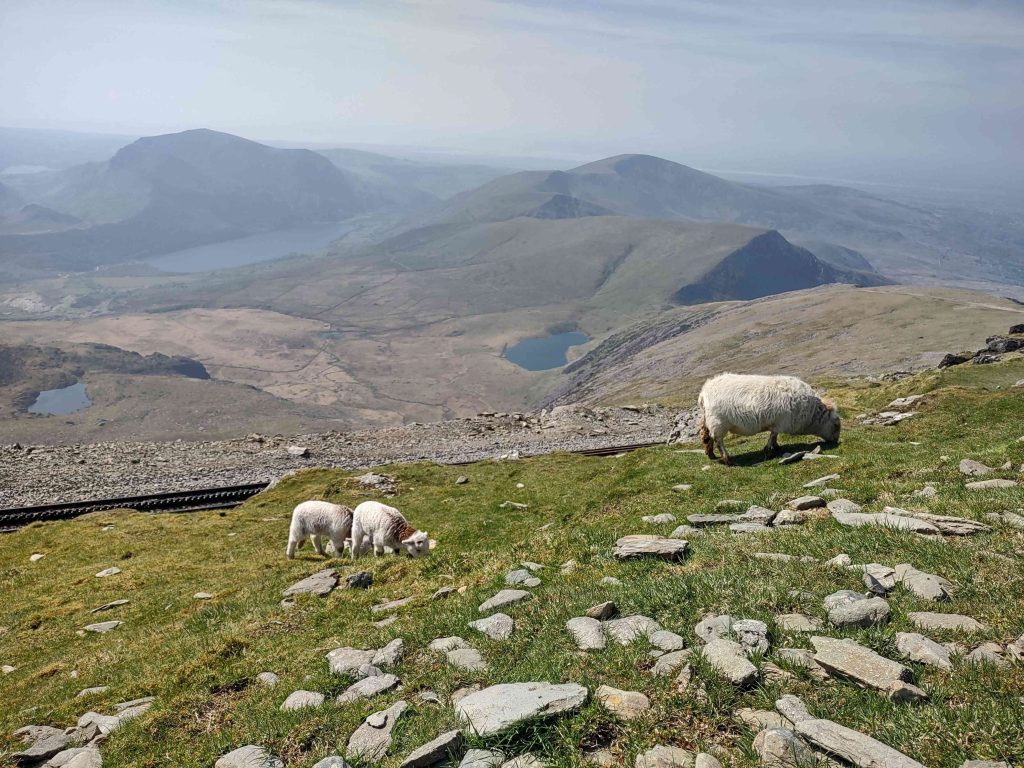
After settling in Bangor, finding our way to Menai Bridge and meeting with our supervisors Svenja and Stuart for the first time, we have been busy with planning our experiment and thinking about a suitable set-up. This included some visits to a floating raft in the middle of the Menai Strait, where we will be conducting our experiments in the next months. The raft has a frame system where wooden settlement boards can be deployed directly into the seawater. We have 15 of these wooden boards that are reserved for our experiments. To them, we will attach algae, which we will fix to PVC panels and bare PVC panels, which both will serve as substrates for the epiphytic communities that we are interested in. We use two different substrates in our experiments (PVC and living algae) as we want to see if the epiphytic growth depends on biological interactions with the substrate, thus the algae. At the top end of the wooden boards, we will install LED strips to realise three different night-time light regimes: no ALAN and ALAN with two different light intensities (15 and 30 Lux). The power supply for the LED system is provided by solar panels on the raft. It is a great location for our experiment as the pontoon is mostly sheltered from night-time light pollution. The only downside of it is that it can only be reached by boat, so we rely on the local technicians Pete and Aled to take us out as we’re not allowed to drive the boat by ourselves. Our weekly visits to the raft have become kind of a routine and we always enjoy the short boat ride from the institute, with a salty breeze and the sunshine in our faces.
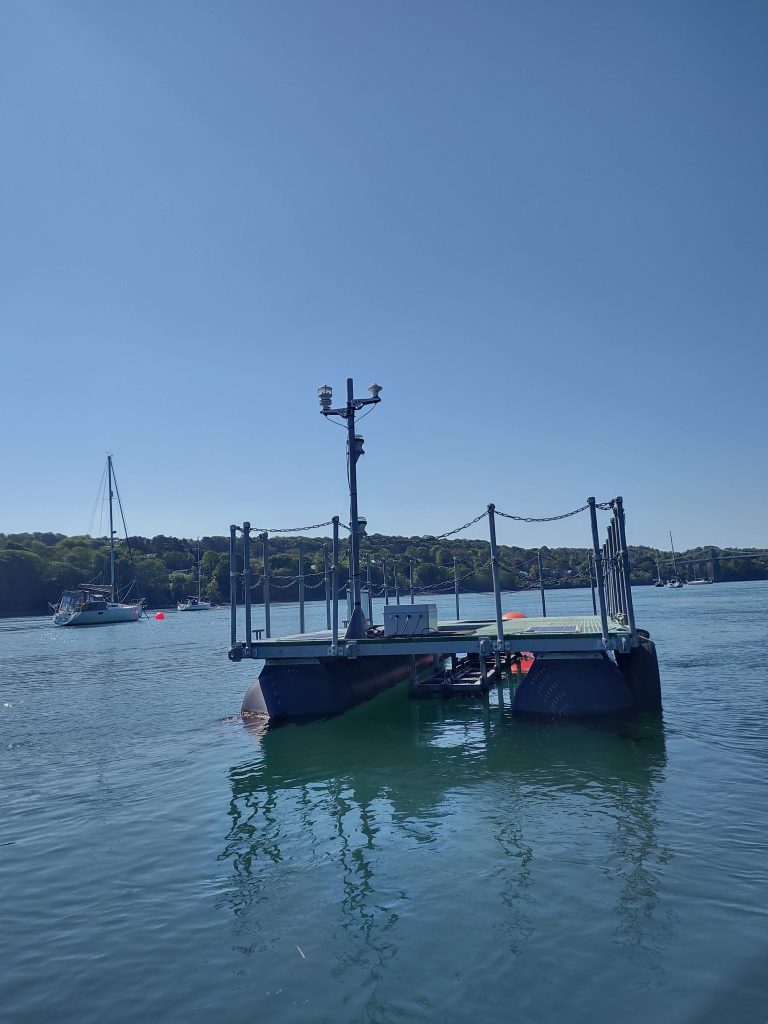
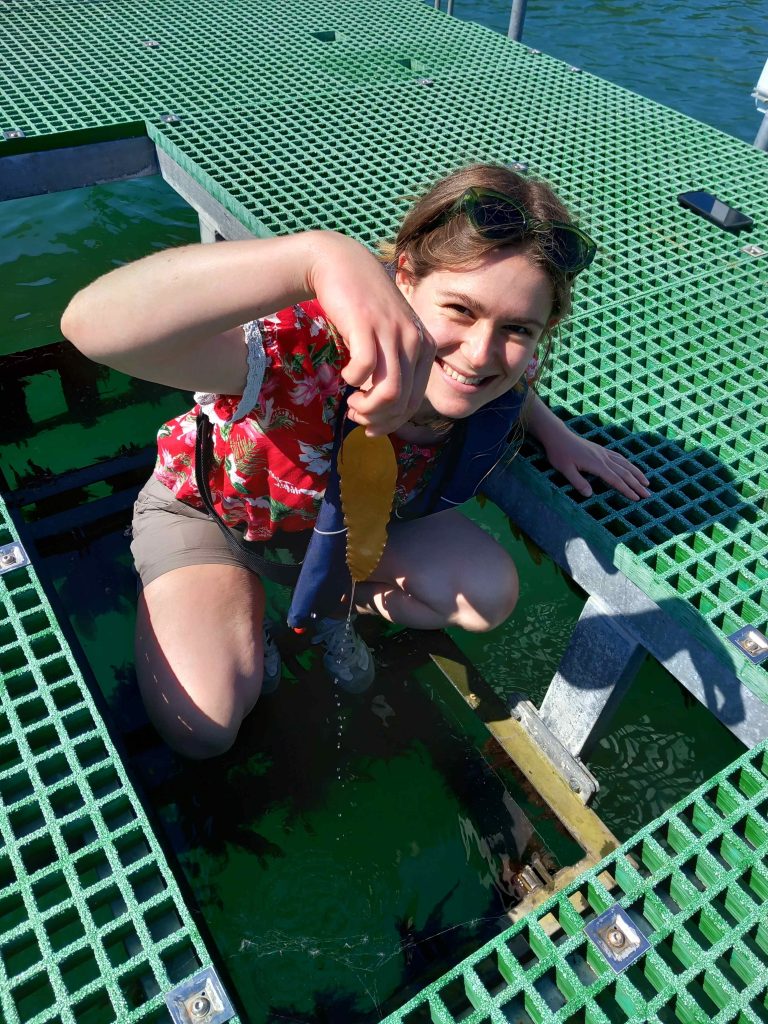
Another challenge in recent weeks has been to find a suitable algal species for our experiments. So, we packed our wellies and explored different places around Menai Bridge. Finally, we found a pristine beach on the south coast of the Isle of Anglesey, which is barely affected by light pollution. It’s a rocky shore ecosystem that hosts a diverse community of invertebrates and algae and is characterised by strong gradients in wave exposure due to tidal variations. During low tide, there are many small tidal pools where we could find a lot of different taxa of macroalgae, including the brown seaweed Fucus serratus, which we will be using for our experiments.
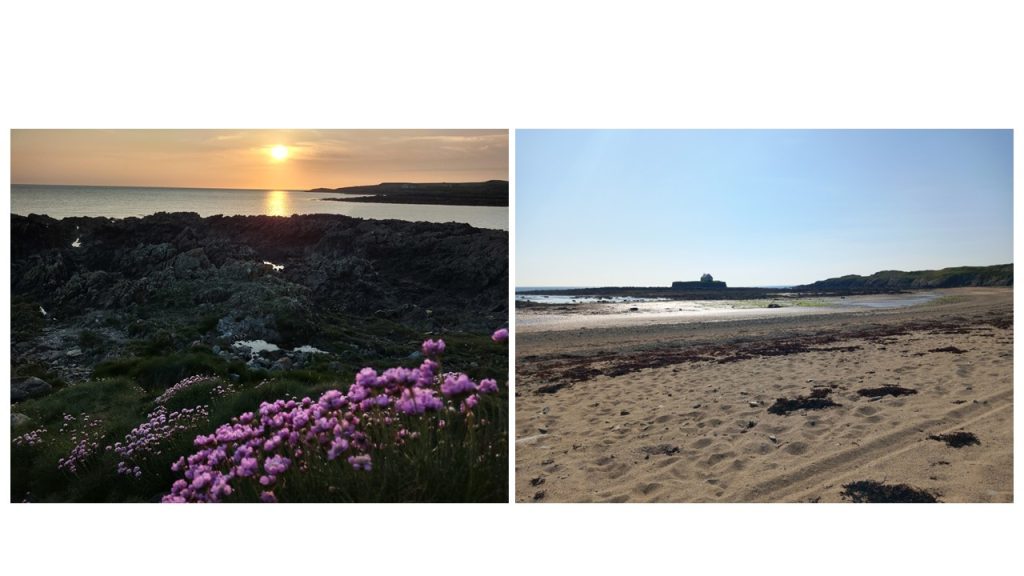
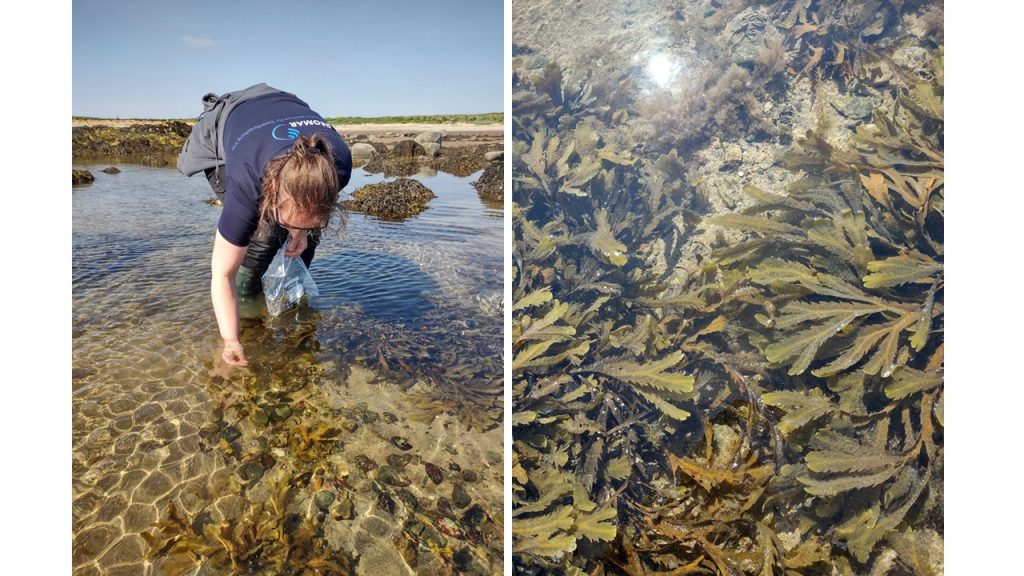
After finding a good site to collect algae, we tested different methods to attach our chosen macroalgal species to the PVC panels. Each panel has four holes – one in each corner – and we used one of these holes to fix a rope to the panel. We then wrapped the rope several times around the PVC panel and secured it at the opposite corner. For attaching the algae to these ropes, we thought of two different methods: Either placing the algal stipe between the slings of the rope or using a cable tie to fasten the algae to the rope. Finally, we deployed the some algae together with some bare PVC panels at the raft for a pilot study. We left them in the water for a total of four weeks and checked them regularly. We were happy to see that spring has arrived even in North Wales and that there was a lot going on – also underwater. We could already see some epiphytes growing on our algae after two weeks! In addition to that, a lot of invertebrate larvae seemed to be attracted by our panels as well, what might be a problem that we will have to solve later as we only want to assess the biomass of the autotrophic settlers.
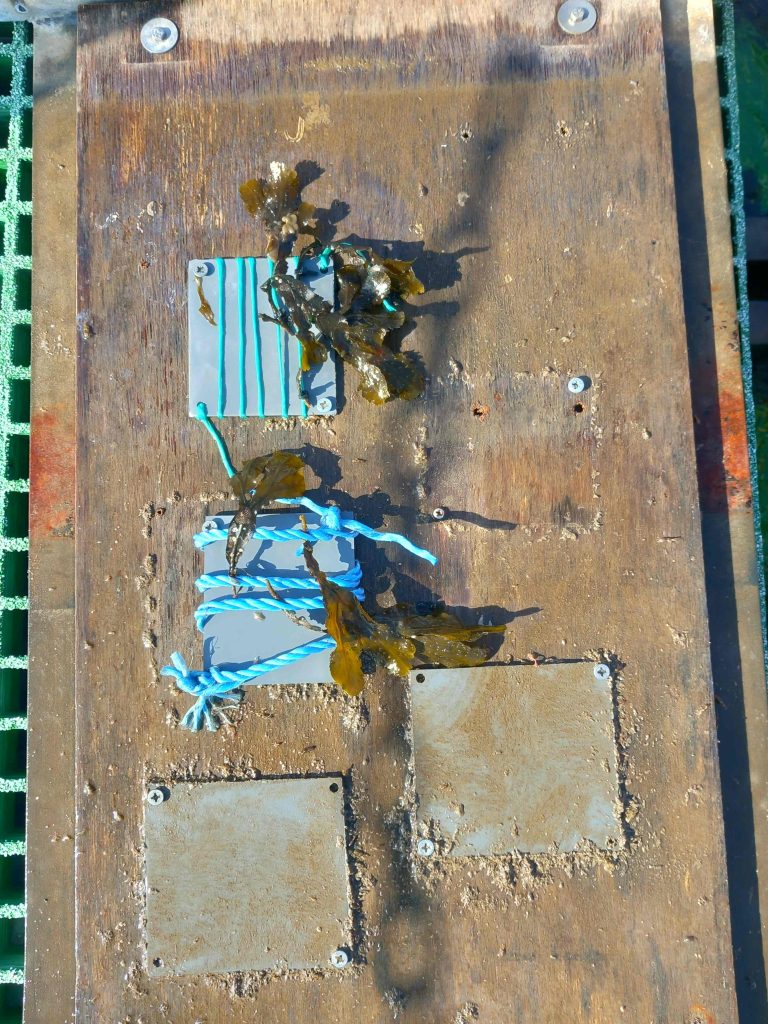
Using the panels and the algae from our pilot study, we could explore different methods to scrape off the epiphytes that had grown on both substrata. We tried scraping with a paint brush, a spatula and a toothbrush and after some trial and error we chose the toothbrush as the best method to separate the epiphytes from the PVC panels and the algae.
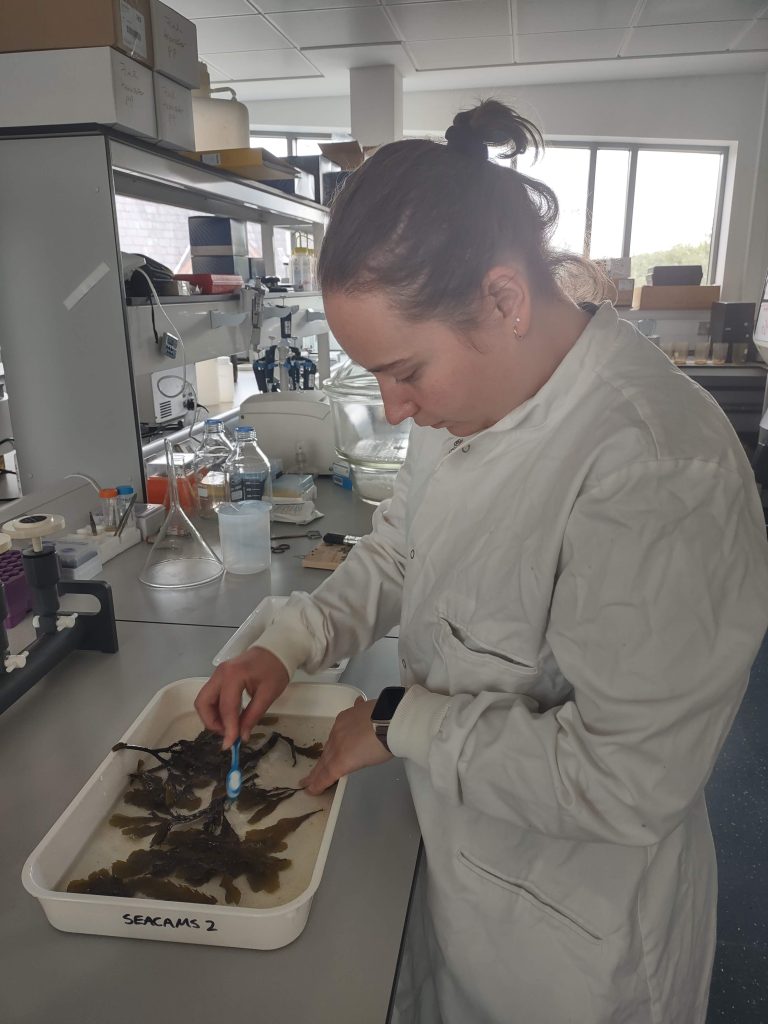
When we are not looking for materials in our favourite DIY shop, scraping off epiphytes in the lab or discussing the progress of our project with our supervisors, you will probably find us outdoors in the beautiful nature surrounding Bangor. The jagged mountains of Snowdonia are just a 30-minute drive away, and the Isle of Anglesey with its breathtaking coast is just around the corner. We have in fact already climbed Mount Snowdon (or Yr Wyddfa how it is officially called here), the highest mountain in Wales. We were really lucky and got a great view from the summit – it is only supposed to be clear on one out of ten days! We also took advantage of some sunny weekends and explored coastal forests and small beaches on the Anglesey Coast path. One of our favourite places so far is the small island Ynys Llanddwyn, which is cut off from the mainland at high tide. It is part of the Newborough Warren National Nature Reserve with a wildflower-rich dune system. It is also home to many seabirds such as sandpipers, ringed plovers and oystercatchers.
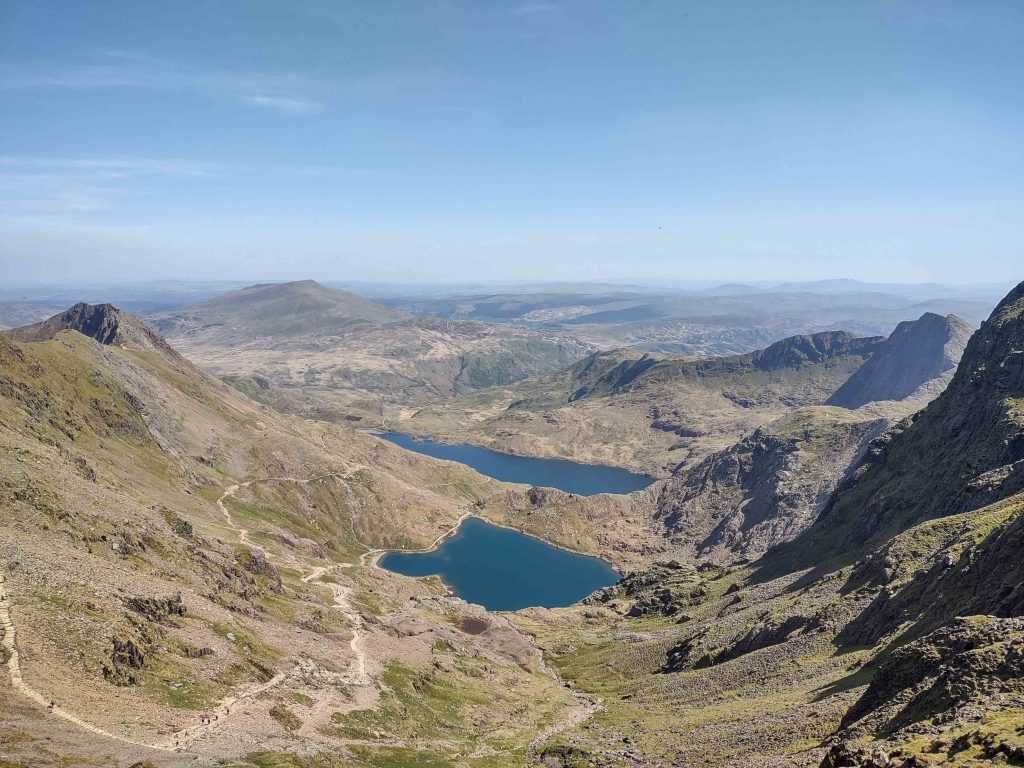
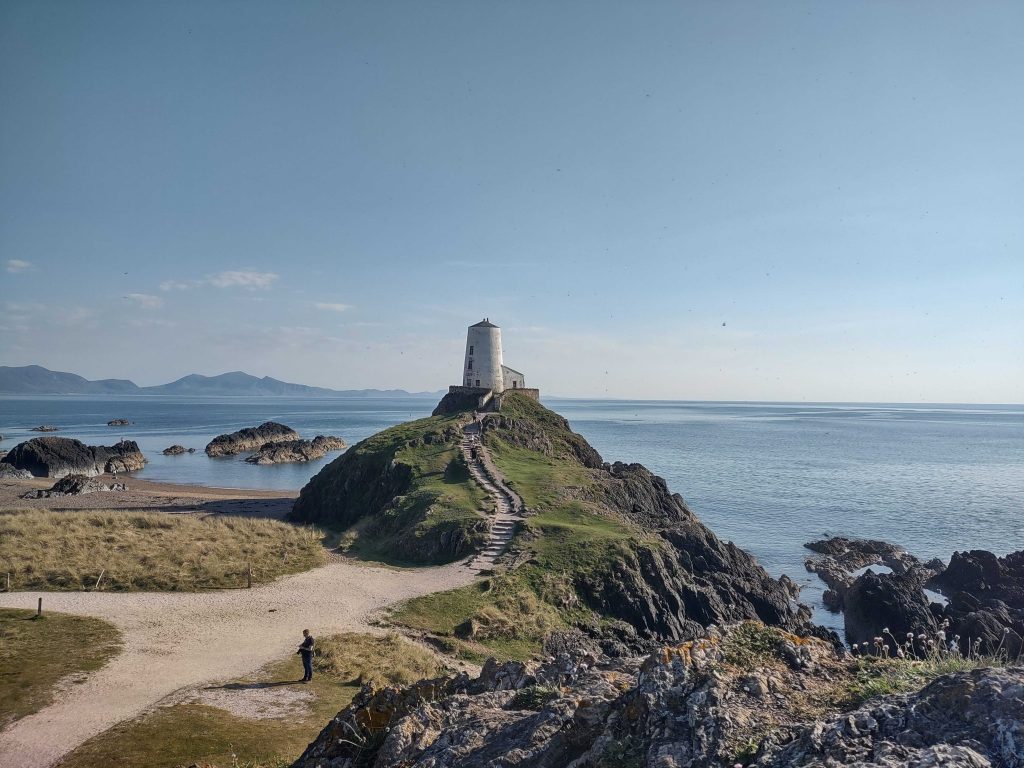
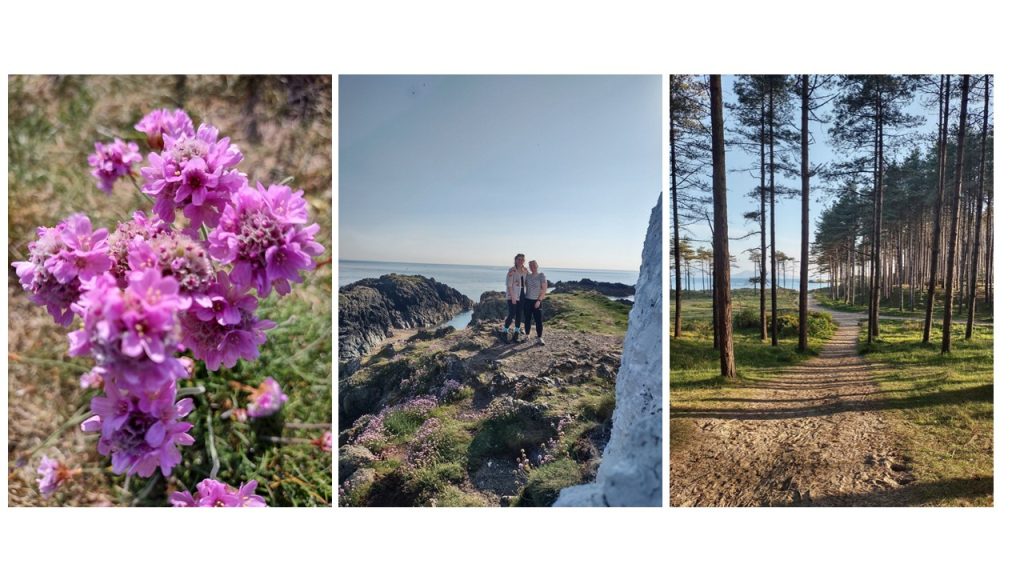
Besides hiking, we also tried to experience some local culture. Thus, the weekly Pub Quiz at a local pub with a beautiful view on Bangor Garth Pier has become somewhat of a tradition for us. After initial difficulties (one category was the meaning of Welsh places), we managed to recruit some locals for our team and even won a round at the quiz!
In contrast to what we expected from North Wales, the weather has been really nice so far which allowed us to go on some sunny walks around Bangor after work or on the weekends.
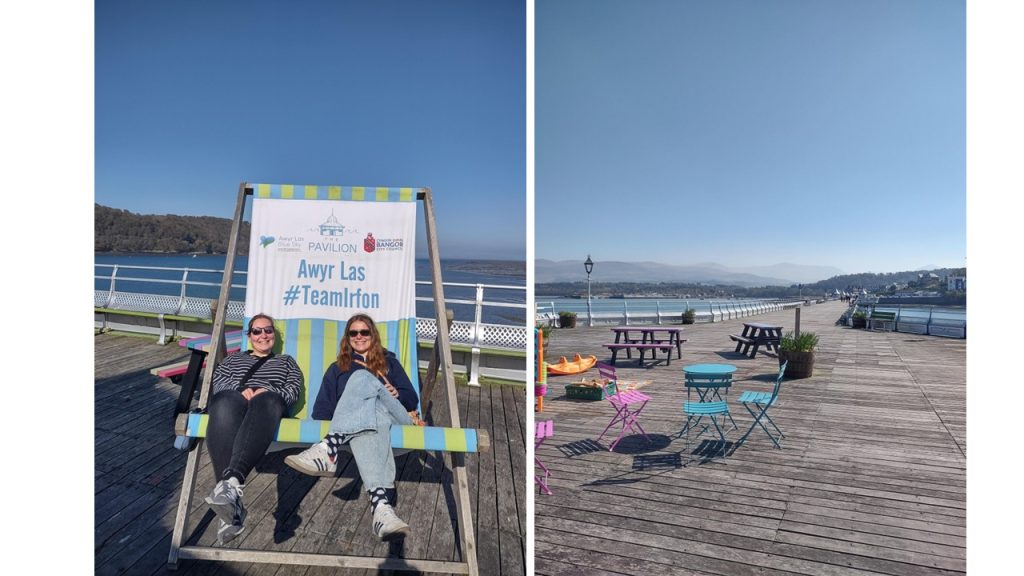
This week we tested our LED system, went out on a field trip to collect algae and spent a long day in the lab and on the raft with weighing the algae, fixing them to the PVC panels and getting the light set-up ready. Finally, we deployed our first experiment! We are really excited to watch our epiphytes grow within the next two weeks and see our first results.
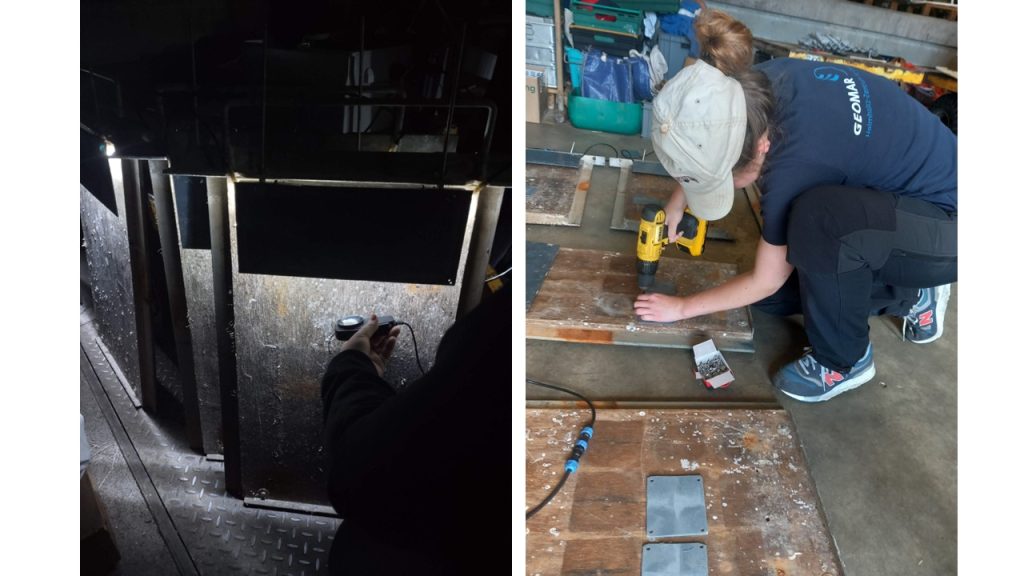
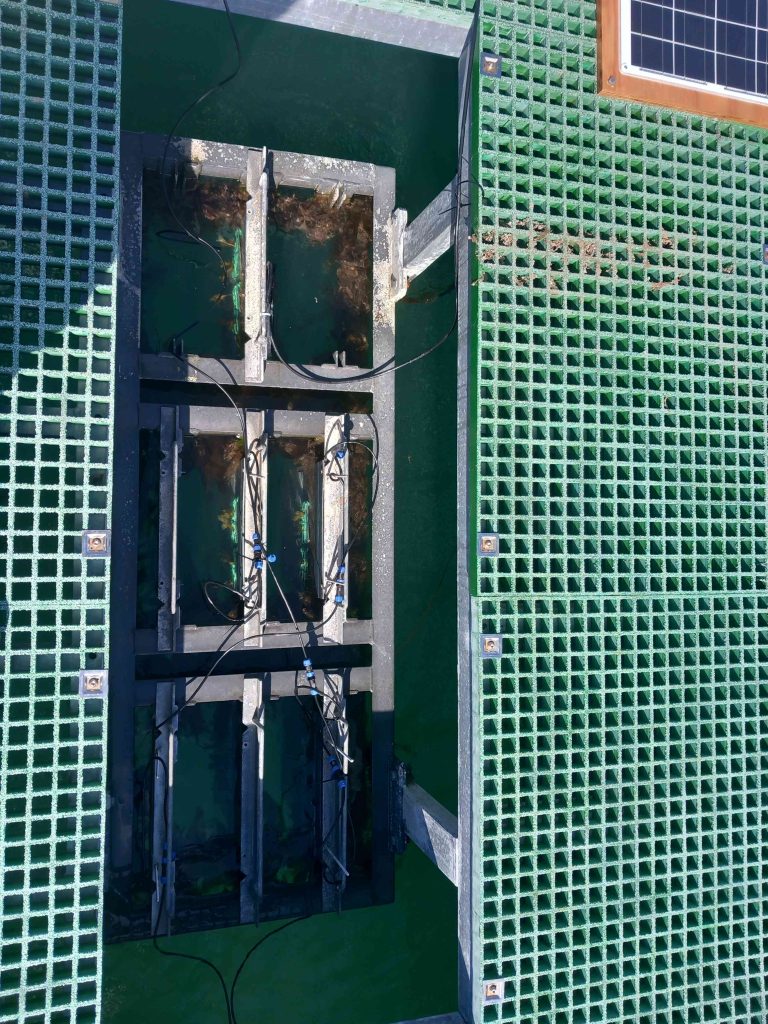
Da bo am y tro! Bye for now from Wales!
Stefanie & Clara
